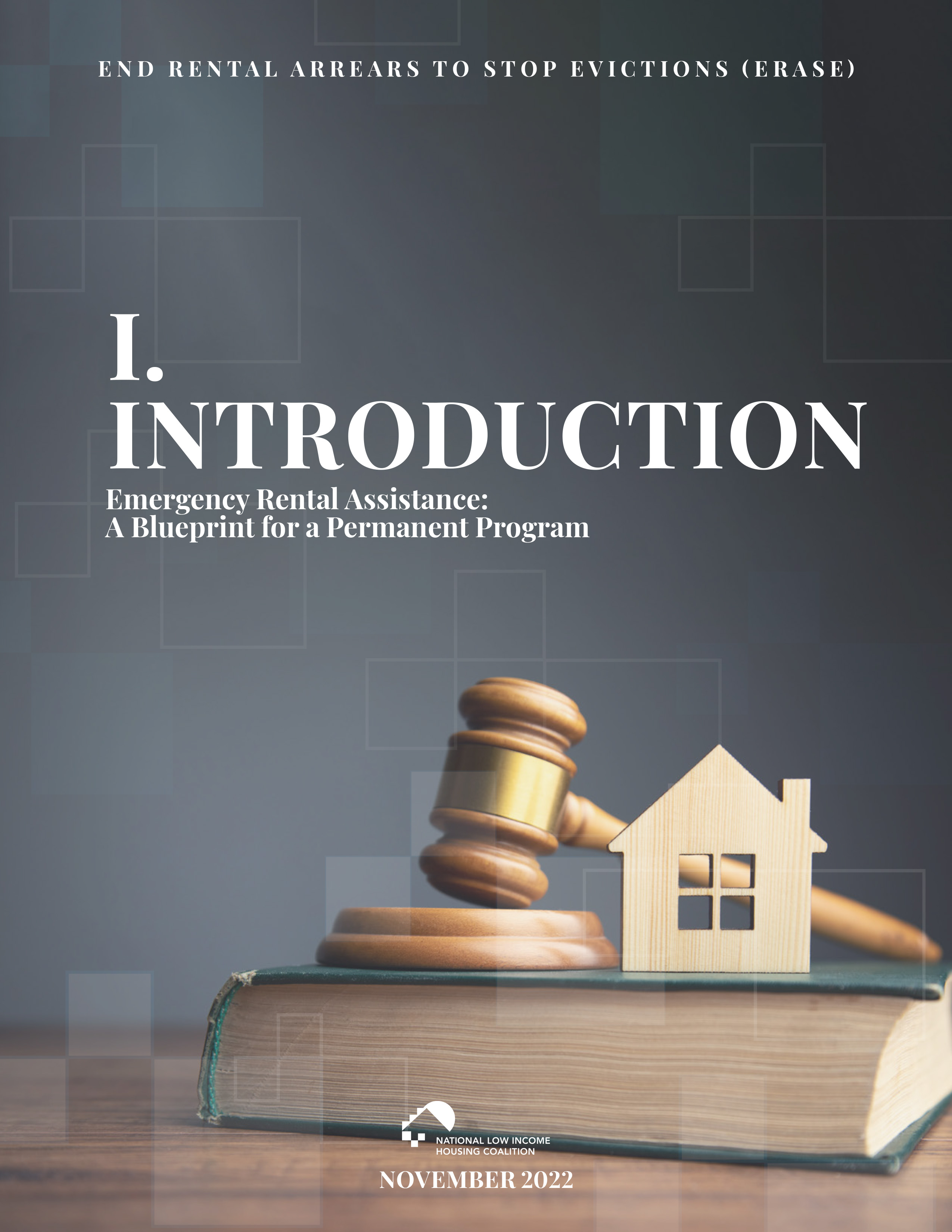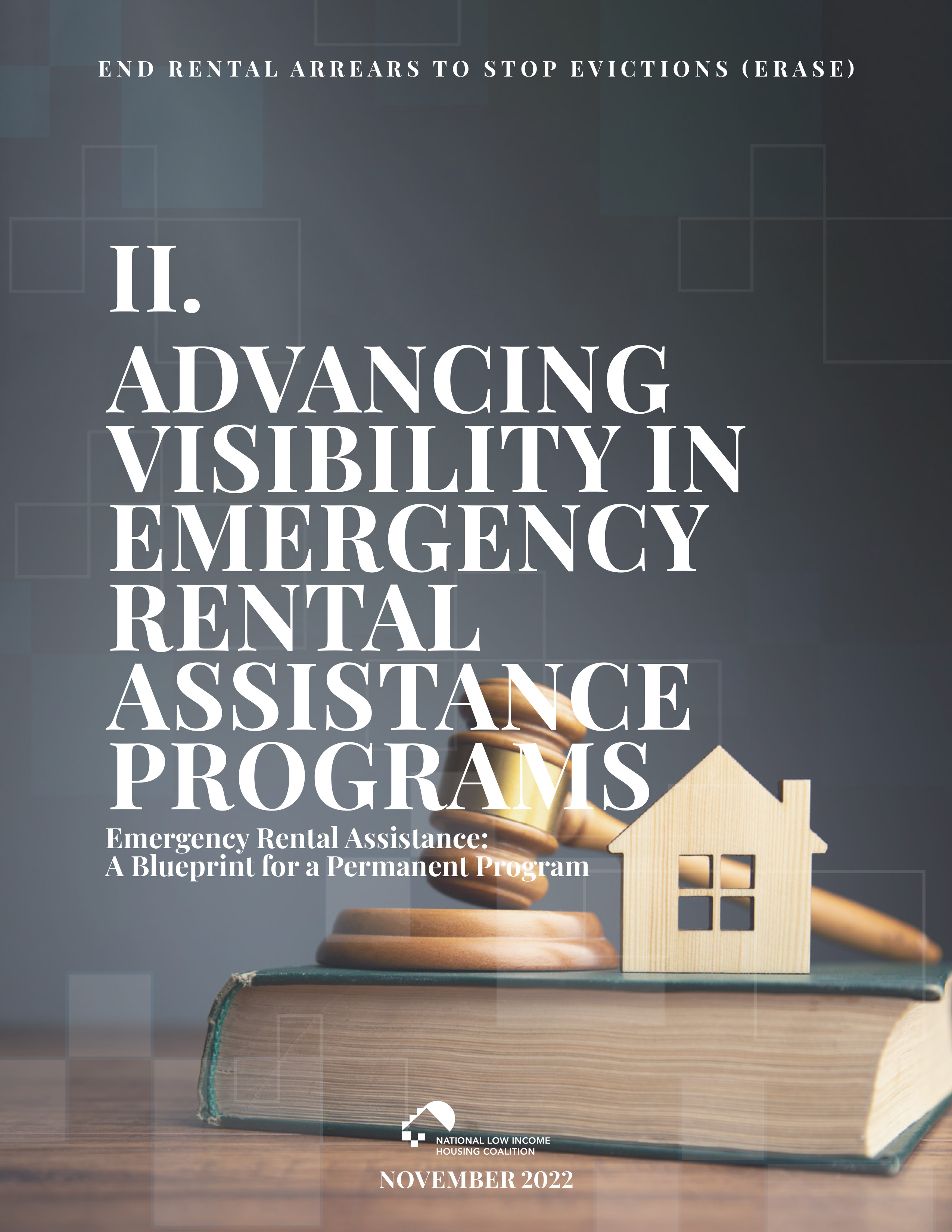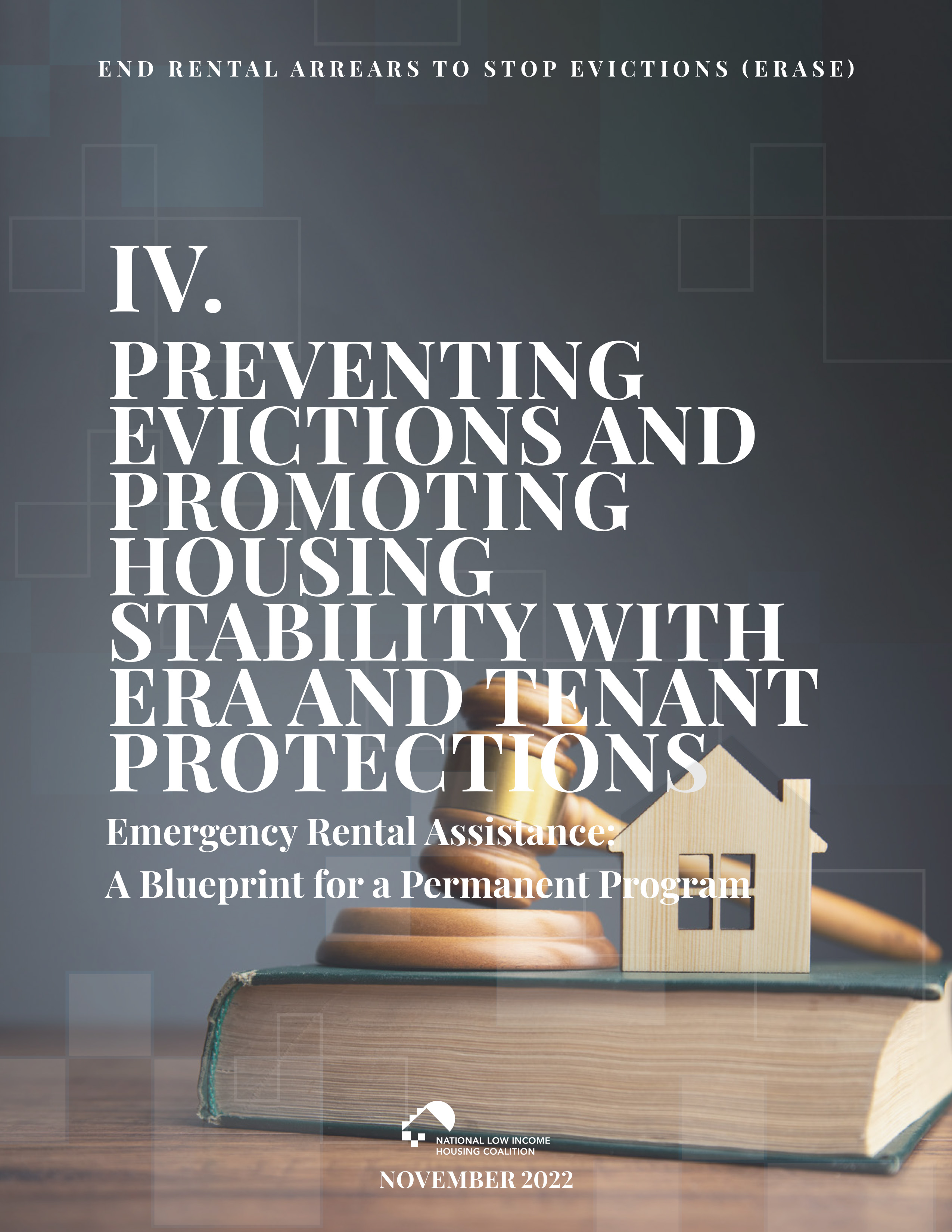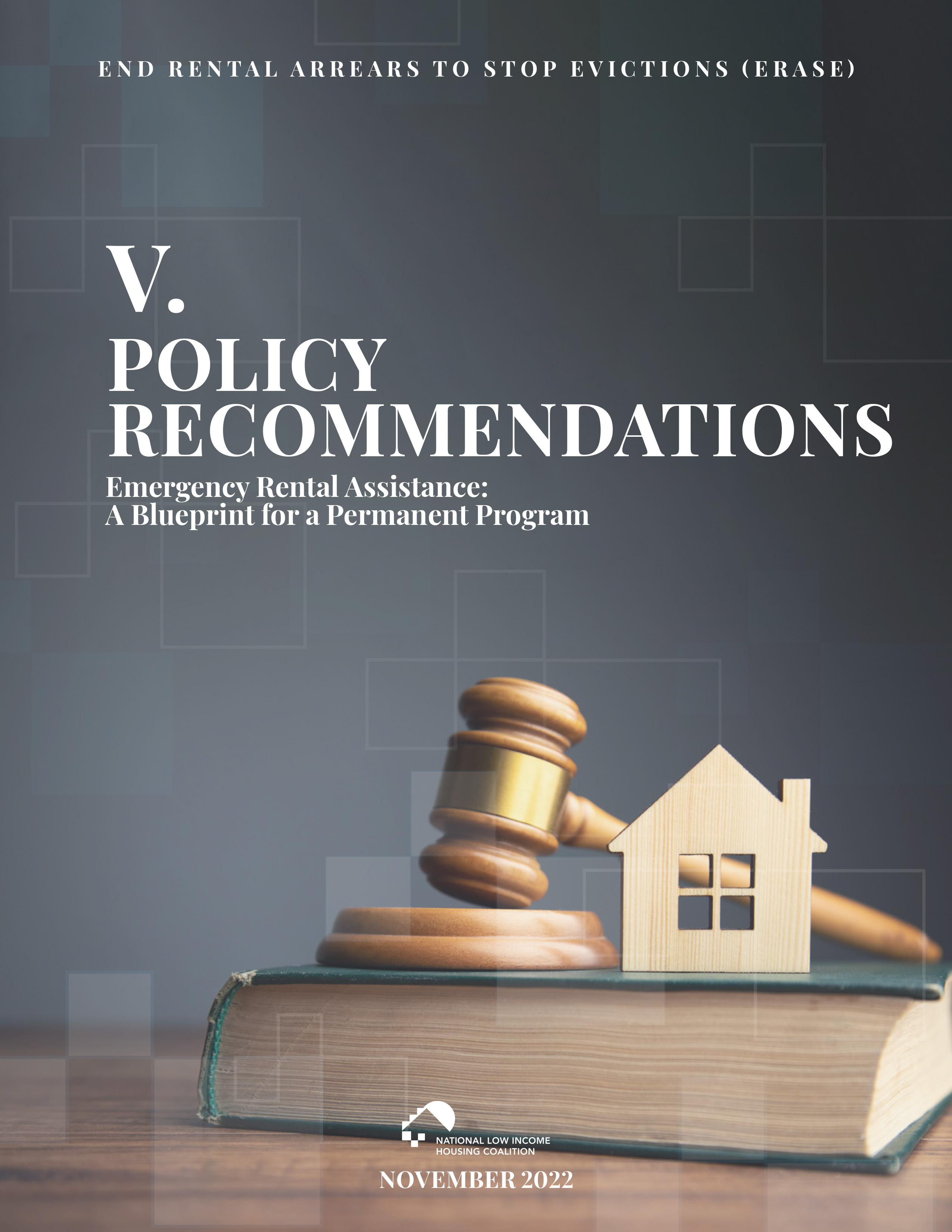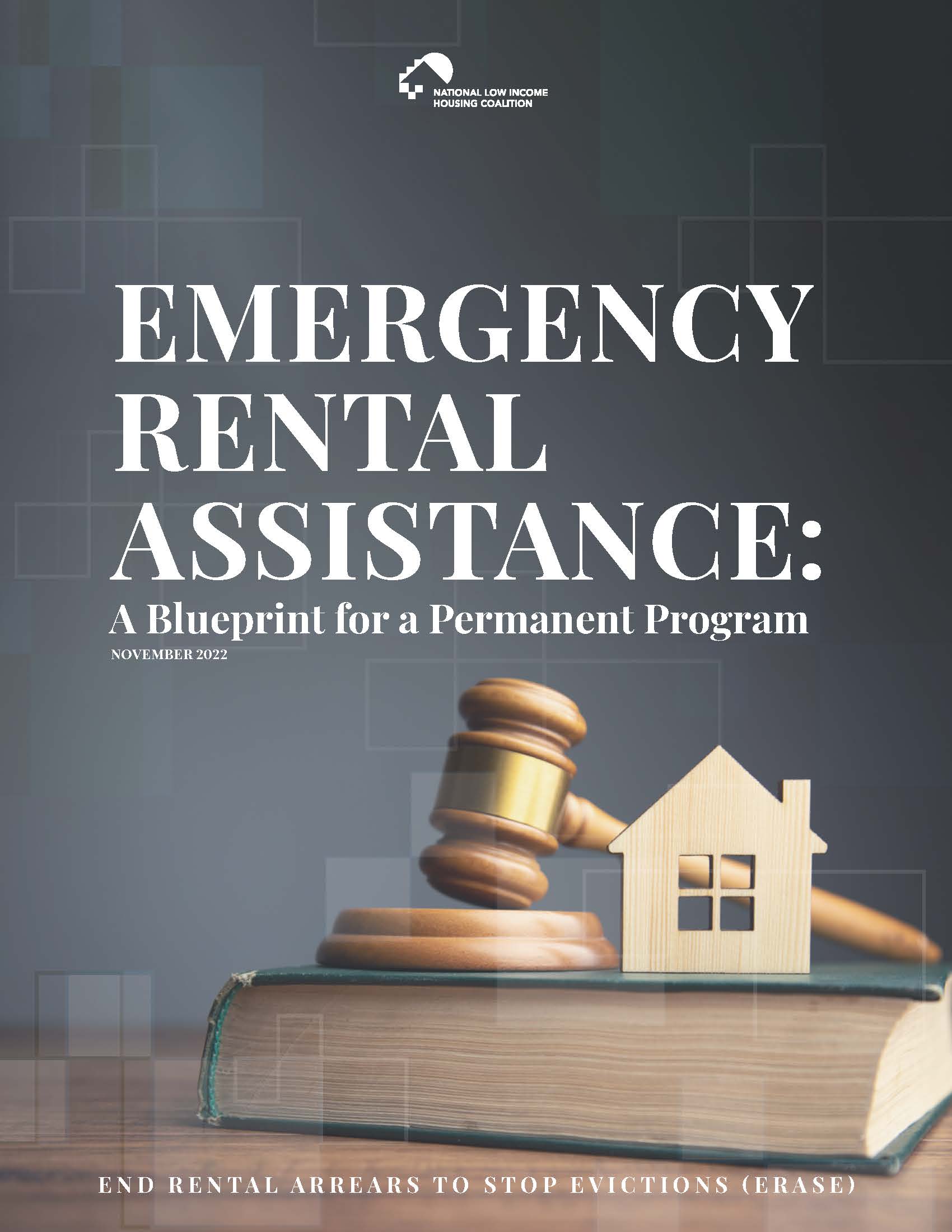NLIHC Releases Blueprint for a Permanent Emergency Rental Assistance Program
Nov 17, 2022
NLIHC today released a new report, Emergency Rental Assistance: A Blueprint for a Permanent Program. The report examines the implementation of the U.S. Department of the Treasury’s (Treasury) Emergency Rental Assistance (ERA) program by state and local organizations in order to identify policies and practices that led to successful implementation and provide recommendations for model programs. By offering a compendium of new research, innovative tools, and shared experiences in the implementation of ERA, the report aims to provide a blueprint that could be used to establish a permanent ERA program in the future.
The new report was authored by members of NLIHC’s End Rental Arrears to Stop Evictions (ERASE) project. For more than two years, the ERASE project has tracked the progress of ERA and collaborated with state partners, local jurisdictions, and program administrators to ensure that emergency rental assistance reaches the lowest-income and most marginalized renters. In particular, the ERASE project has sought to ensure that ERA programs are visible, accessible, and preventive, and the new report focuses on identifying those practices and policies that were most successful in realizing this goal.
The report begins with an overview of Treasury’s ERA program, surveying its aims and structure, the guidance issued by Treasury concerning the use of ERA funds, Treasury’s processes for allocating and reallocating funds, and the general impact of ERA. In subsequent sections, the report explores how ERA programs around the country ensured that ERA was visible and accessible to the lowest-income renters and how programs guaranteed that ERA programs prevented housing instability, evictions, and homelessness. The report draws on numerous examples of policies and practices developed by organizations around the country and highlights in particular the work of the ERASE Cohort, a group of 38 state and local partners working with NLIHC to ensure that ERA reaches those renters most in need. The report concludes with a set of recommendations about legislation that would help create a permanent ERA program to prevent evictions and promote housing stability for extremely low-income renters.
Read the report at: https://nlihc.org/resource/nlihc-releases-blueprint-permanent-emergency-rental-assistance-program
For more information about the ERASE project, visit the ERASE website at: https://nlihc.org/erase-project
